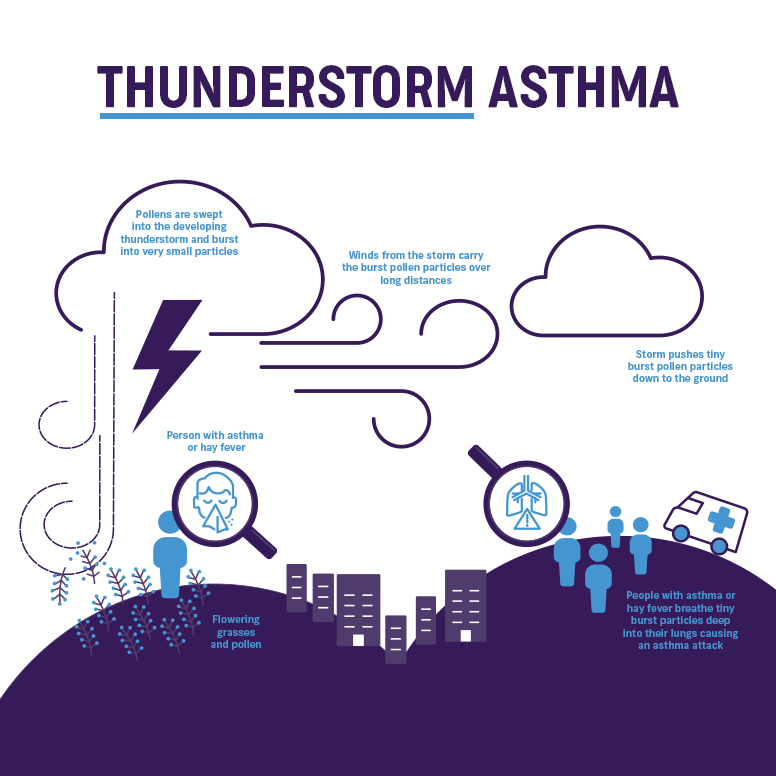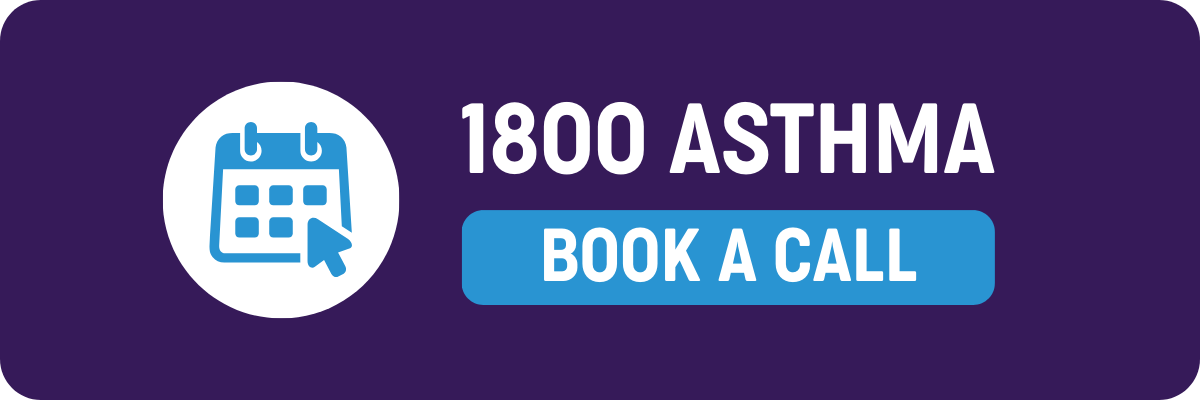Thunderstorm asthma
Thunderstorm asthma can be very serious for people with asthma. The peak time for thunderstorm asthma is mainly spring but can extend to December during the grass pollen season. Your local media may announce ‘Thunderstorm Asthma Alerts’ on days when there is a high risk.
Thunderstorm asthma events are thought to be triggered by an unusual mix of high levels of grass pollen and a certain type of thunderstorm. During these storms tiny pollen grains from grasses can be swept up in the wind and carried long distances. When exposed to this air, the tiny particles of pollen are breathed deep into your lungs, triggering an asthma flare-up or attack.
WHO CAN GET THUNDERSTORM ASTHMA?
You might have a higher chance of a sudden asthma flare-up triggered by a thunderstorm if you have:
- seasonal hay fever
- current asthma
- a history of asthma
- undiagnosed asthma.
The chance of having thunderstorm asthma is highest for adults who are sensitive to grass pollen and have seasonal hay fever (with or without known asthma). The worst outcomes are in people with poorly controlled asthma.
WHAT CAN I DO?
To lower the chance of having thunderstorm asthma when it is a known trigger for you, it is best to have good asthma management year-round.
This means:
- using your preventer especially during the spring thunderstorm season
- keeping your hay fever under control and taking any necessary hay fever medication
- checking pollen levels and where possible avoid being outside on these days.
- being prepared. Have your scripts and supply of your asthma and hay fever medicines ready for the thunderstorm asthma and pollen seasons.
VicEmergency
VicEmergency is a centralised website for Victorians to find emergency information and warnings. The website has a real-time map display with incidents across the state including thunderstorm asthma warnings.
Visit the website to download the mobile app.
For pollen monitoring in Victoria, you may like to save this Melbourne Pollen page as one of your favourites.
If you do not see your state or territory listed, it is likely there isn’t one available and therefore we ask you to be vigilant and prepared when it comes to your asthma and allergies.
In language resources
Click here to view additional Thunderstorm Asthma information and resources in multiple languages.
THUNDERSTORM ASTHMA OVERVIEW
Asthma Educators can answer your asthma questions
Book a FREE phone call at a time that works for you or call us direct on 1800ASTHMA (1800 278 462).










